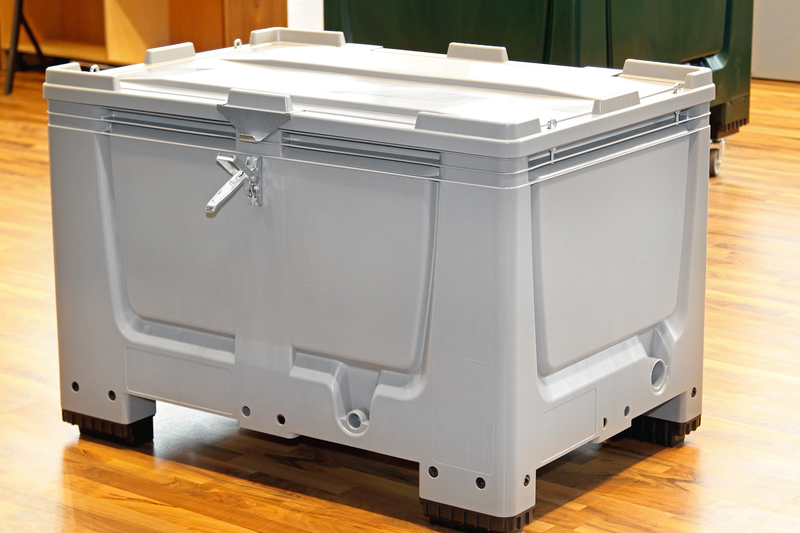How to Store a Freezer to Ensure It's Ready When You Need It Again
Properly storing a freezer when it's not in use is essential to extend its lifespan, maintain food safety, and ensure peak performance when you need it again. Whether you're putting away a chest freezer, upright freezer, or compact unit, following best practices can help you avoid unpleasant odors, mold, and mechanical issues. This comprehensive guide covers all the steps you need to know about how to store a freezer for future use.
Why Store Your Freezer Properly?
Taking care of your freezer during storage isn't just about keeping it physically safe. Improper storage can result in:
- Unpleasant odors
- Mold and mildew growth
- Mechanical issues when you reconnect
- Increased risk of damage during transit or in storage areas
- Diminished lifespan of your freezer

Prepare Your Freezer for Storage
Before you put your freezer away, preparation is key. Spending time on the following steps will prevent common issues and ensure an easy restart after storage.
1. Empty and Defrost the Freezer
- Remove all items: Safely discard or relocate any food items.
- Unplug the freezer: Make sure it's switched off and disconnected from power.
- Defrost completely: Leave the door open and allow all ice buildup to melt fully.
Allow adequate time for the defrost process. Depending on the amount of ice, it may take several hours, so plan ahead.
2. Clean Thoroughly
A clean freezer is less likely to harbor mold or bad smells. Use a mixture of warm water and baking soda (1 tablespoon baking soda per quart of water) for best results.
- Wipe down all interior surfaces
- Remove and wash drawers, shelves, and gaskets
- Clean the exterior, focusing on handles and seals
Tip: Leave the freezer door open for an hour after cleaning to let all surfaces dry completely.
3. Dry Out Completely
Moisture is the #1 cause of mold and unwanted odors in stored freezers.
- Pat interior surfaces dry with a clean towel
- Ensure gaskets and crevices are dry
- Allow air circulation before closing
This step is critical--never seal your freezer if it isn't completely dry inside.
The Best Way to Store Your Freezer
Now that your freezer is clean and dry, it's time to consider the actual storage process. Where and how you store your freezer affects its efficiency and longevity.
1. Keep the Door Ajar
Never store a freezer with the door or lid completely shut! This creates a closed space for mold, mildew, and musty odors to develop.
- Secure the door in an ajar position with a small towel or a purpose-designed spacer
- Tape the door with painter's tape if necessary, but avoid strong adhesives
- Opening of about 1-2 inches is optimal for most freezers
2. Choose an Ideal Storage Location
Location matters when it comes to freezer storage. Look for:
- Dry, ventilated space--avoids moisture-related problems
- Shade or climate-controlled environments--prolongs the integrity of internal components
- Avoid basements that are prone to dampness or flooding
- Keep off direct sunlight--excessive heat can warp plastics or damage seals
3. Keep It Upright
Always store your freezer in an upright position. Laying it on its side or back can cause compressor oil to flow into parts where it can cause damage, making the unit hard to restart.
- Upright freezers should always remain standing up
- If you must move it on its side (for transportation), allow the freezer to rest upright for a few hours to let the oil settle before powering up
4. Protect the Power Cord
- Neatly coil the power cord and secure it with a twist tie
- Protect the plug end with a plastic bag (loosely) if there's risk of dust or corrosion
- Avoid wrapping the cord around door handles or pinching it under the appliance
5. Cover and Protect the Exterior
- Use a breathable cover, like a cotton sheet, to shield the freezer from dust
- Avoid plastic tarps which can trap moisture and cause rust.
- Do not cover vents or air intakes/exhausts
Label the freezer if you're storing it in a communal space or storage unit.
Special Considerations for Long-Term Freezer Storage
If you intend to store a freezer long-term (over six months), keep these extra tips in mind:
- Check on the appliance periodically. Open the lid/door occasionally to ensure airflow and inspect for pests or moisture.
- Recharge deodorizers. Place an open box of baking soda or a commercial odor absorber inside before closing the lid. Replace as needed.
- Make sure no critters or insects have taken up residence.
It's also wise to review your appliance's manual or manufacturer's recommendations for unique storage guidelines.
Restarting Your Freezer After Storage
When you're ready to use your freezer again, proper setup is as important as proper storage.
1. Inspect the Freezer Before Use
- Check for visible mold, mildew, or pests
- Inspect the power cord for any cracking, fraying, or damage
- Ensure the door gasket is still flexible and forms a good seal
- Smell test: are there any musty or chemical odors?
If you detect a stale odor, air the freezer out for 24 hours and repeat the cleaning process before plugging it in.
2. Allow Time to Stand After Moving
If the freezer was tipped or transported on its side, set it upright and wait at least 4-6 hours (or even overnight) before switching on. This lets the compressor oil flow back to where it belongs and prevents damage to the cooling system.
3. Plug In and Test Operation
- Connect to a suitable grounded outlet
- Listen for the compressor noise and verify the interior begins cooling
- Allow several hours for optimal temperature before adding food
4. Deodorize as Needed
If odors linger despite cleaning and airing, try:
- Leaving activated charcoal or a bowl of coffee grounds inside for 24 hours
- Using commercial freezer deodorizers
Common Mistakes to Avoid When Storing a Freezer
Even well-meaning storage plans can go wrong. Here are some frequent mistakes to avoid:
- Sealing the freezer completely shut, which traps moisture inside
- Storing in damp or hot areas, causing rust or microbial growth
- Neglecting routine checks for odors, pests, or moisture during long-term storage
- Laying the freezer on its back or side for extended periods
- Using harsh detergents or bleach that can damage the seals and interior surfaces
- Wrapping the freezer in airtight plastic which prevents air flow

Quick FAQ: Safe Freezer Storage
- Should I leave my freezer unplugged during storage? Yes. Always unplug for safety. Only plug in occasionally if you're running it for short periods to check function.
- Is it necessary to seal the door completely to keep out dust? No. It is better to keep the door slightly open to promote air flow.
- Can I store a freezer in an outdoor shed? Only if the shed is weatherproof, dry, and not prone to condensation or extreme temperatures.
- How often should I check on a stored freezer? Every 1-2 months is ideal for long-term storage.
Conclusion: Proper Freezer Storage Pays Off
Knowing how to store a freezer properly means you won't face unpleasant odors, mechanical problems, or lost food when the time comes to use your appliance again. Take the time to clean, dry, and store your freezer smartly. Choose a safe, dry space, keep the door ajar, and revisit your storage occasionally. When you follow these easy steps, your freezer will be ready to deliver reliable, energy-efficient cold storage -- exactly when you need it.
Ready to store your freezer? Bookmark this guide and refer back whenever you need to put your freezer on standby. By following these comprehensive storage strategies, both your toaster-sized mini freezer and family-sized chest freezer will stand the test of time.



